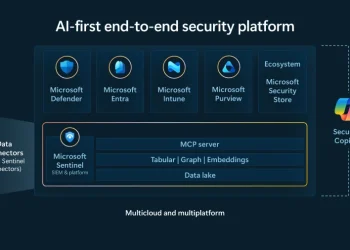Offline Gemini Robotics AI model technology has taken a significant step forward as Google DeepMind releases a version that works entirely on-device. Unlike its cloud-dependent predecessor, this new model operates without an internet connection, making it ideal for settings with poor connectivity or strict data privacy rules.
The compact vision-language-action (VLA) model now runs directly on robots. As a result, it delivers fast response times and reduces reliance on cloud processing. While the hybrid version still offers more power, the on-device model has proven surprisingly capable. It allows developers to deploy intelligent robotics in environments where connectivity is unreliable.
Carolina Parada, the head of robotics at Google DeepMind, emphasized that the offline model performs well in real-world situations. Although it lacks cloud integration, it can execute complex physical tasks and adapt with only 50 to 100 demonstrations. Therefore, it becomes a practical choice for early-stage applications or industries with high security demands.
Initially trained using Google’s ALOHA robot, the offline Gemini Robotics AI model showed impressive transferability. It quickly adapted to operate on the Apollo humanoid from Apptronik and the Franka FR3 robot. Consequently, it can work across various robotic platforms without extensive retraining.
To support developers, Google is launching a software development kit (SDK) alongside the model. This toolkit makes it easier to test, fine-tune, and implement the AI in specific environments. Notably, it’s the first time DeepMind has provided a dedicated SDK for one of its VLA models. As a result, teams gain greater flexibility and control when designing robotic systems.
Despite its smaller scale, the offline model demonstrates robust generalization. It can perform multiple tasks out of the box and adjust to new ones with minimal input. Moreover, the model’s ability to function locally offers significant advantages in latency, privacy, and operational stability.
DeepMind is initially releasing the SDK and model to a select group of trusted testers. This cautious rollout ensures safety and helps refine its performance based on user feedback. Eventually, broader access will follow as the model matures.
Furthermore, this release reflects a broader trend toward decentralized AI. Running powerful models locally reduces dependency on cloud infrastructure. It also enhances data security and enables real-time responses. As AI systems become more embedded in physical environments, these features will prove essential.
Overall, the offline Gemini Robotics AI model makes advanced robotics more accessible and secure. It empowers developers to build flexible, responsive systems without sacrificing performance. Whether in remote locations or high-risk industries, this model delivers autonomy where it’s needed most.
READ: U.S. Judge Rules Google Illegally Monopolized Ad Tech Market














